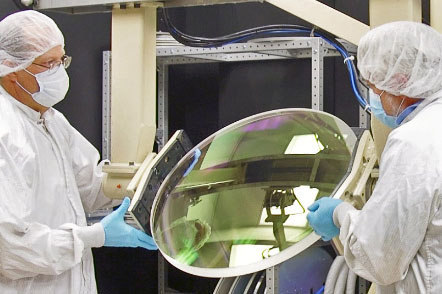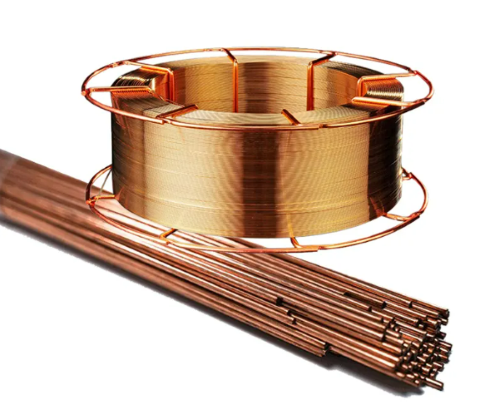Common Fluoride Materials in Industrial Applications
Introduction
Fluoride compounds are widely used across multiple industries due to their unique properties, including chemical stability, thermal resistance, and optical clarity. Fluorides play a pivotal role in sectors ranging from metallurgy and electronics to pharmaceuticals and optics, contributing essential functions that boost the efficiency, durability, and quality of various products. This article is going to discuss the most common fluoride materials employed in industrial applications.
What Are Fluorides?
Fluorides are chemical compounds that contain the fluorine ion (F⁻), often combined with metals, non-metals, or organic groups. Fluorine is the most electronegative element, which gives fluorides their distinct characteristics, such as chemical stability, resistance to heat, and the ability to form strong bonds with other elements. Due to these traits, fluorides are used in applications requiring high-performance materials capable of withstanding extreme conditions. Fluorides are commonly seen in crystalline, ionic, or gaseous forms, depending on their application.

Figure 1 Barium Fluoride Crystal
One primary feature of fluorides is their role in reducing the reactivity of metals, making them valuable in applications that demand long-lasting resistance to corrosion and degradation. This quality has propelled their use in metal coatings, anti-corrosion agents, and as additives in various alloys.
What Are the Properties and Benefits of Fluorides?
The unique properties of fluorides stem from fluorine’s high reactivity and the stability of fluoride compounds. Here’s a look at the most notable properties and benefits:
- Thermal Stability: Fluorides can withstand high temperatures, making them ideal for high-heat environments like aerospace, metallurgy, and ceramics. Certain fluorides, like magnesium fluoride, can endure temperatures exceeding 1,200°C without breaking down, contributing to their use in furnaces and other high-temperature settings.
- Chemical Resistance: Fluorides offer strong resistance to acids, bases, and solvents, which makes them valuable in chemical manufacturing and laboratory equipment. Compounds like calcium fluoride, for instance, are often used in environments where materials are exposed to harsh chemicals.
- Optical Clarity and Low Refractive Index: Many fluoride compounds, such as barium fluoride and magnesium fluoride, are transparent and have low refractive indices, enabling their use in optics. These materials are essential for producing lenses, prisms, and other optical components that require low light distortion.
- Corrosion Resistance: Fluoride coatings and additives enhance corrosion resistance in metals, extending the lifespan of products exposed to moisture and corrosive environments. This property is especially important in the oil and gas, marine, and aerospace industries, where materials need to withstand harsh environments over extended periods.
- Lubricity: Certain fluorides, like calcium fluoride, offer a low-friction surface, making them suitable as solid lubricants. This characteristic is utilized in machinery where reducing friction between components is essential to prevent wear and tear.
A List of Common Fluoride Materials in Industrial Applications
1. Calcium Fluoride (CaF₂)
Applications: Calcium fluoride is commonly used in optics, ceramics, and metallurgy. It serves as a flux in steelmaking and aluminum production to lower the melting point, making processing more efficient.
Benefits: Its high thermal stability and chemical inertness make it suitable for high-temperature applications. Additionally, its optical clarity allows it to be used in UV and infrared optics, producing lenses and windows.
2. Magnesium Fluoride (MgF₂)
Applications: Known for its excellent optical properties, magnesium fluoride is widely used in the manufacture of lenses, coatings for optical devices, and anti-reflective coatings.
Benefits: It offers high transmission from the UV to the mid-infrared range, making it useful for optical equipment that requires broad-spectrum clarity. Magnesium fluoride is also highly durable, making it suitable for outdoor and rugged optical applications.
3. Lithium Fluoride (LiF)
Applications: Lithium fluoride is primarily used in nuclear applications, optics, and as an additive in the aluminum smelting process.
Benefits: It has one of the highest transmission ranges for UV light and is highly transparent, making it invaluable in UV optical applications. Lithium fluoride’s stability in extreme environments also makes it suitable for nuclear reactors as a coolant and shielding material.
4. Barium Fluoride (BaF₂)
Applications: Barium fluoride finds use in optics and as a scintillator in medical imaging and radiation detection.
Benefits: It offers a broad transmission range, from UV to infrared, and provides high optical clarity. Barium fluoride also has radiation-resistant properties, making it ideal for applications that involve exposure to ionizing radiation.
5. Sodium Fluoride (NaF)
Applications: Sodium fluoride is widely used in water fluoridation, pharmaceuticals, and dental care products to strengthen teeth. In industry, it serves as a flux in steelmaking and other metallurgical processes.
Benefits: Known for its antibacterial properties, sodium fluoride is used to prevent dental decay. Its effectiveness as a flux helps in refining and alloying metals, aiding in smoother operations in metal industries.
6. Potassium Fluoride (KF)
Applications: Potassium fluoride is used in chemical synthesis, glass etching, and aluminum metallurgy.
Benefits: It has a high solubility in water, which makes it effective in various chemical processes. Potassium fluoride is also a potent fluoride ion source, assisting in reactions that require fluoride ions for bonding or catalysis.
7. Yttrium Fluoride (YF₃)
Applications: Yttrium fluoride is used in optical coatings and as an additive in metallurgy to produce high-strength alloys.
Benefits: Its high melting point and resistance to corrosion make yttrium fluoride suitable for high-temperature and high-strength applications. Additionally, its optical properties are favorable for coatings on lenses and mirrors.
8. Cryolite (Na₃AlF₆)
Applications: Cryolite is primarily used in aluminum smelting as an electrolyte that dissolves alumina, enabling the efficient extraction of aluminum.
Benefits: This mineral is crucial for aluminum production, as it lowers the energy requirements in the smelting process. Cryolite’s ability to reduce the melting point of alumina also aids in cost reduction and process efficiency.
9. Lanthanum Fluoride (LaF₃)
Applications: Lanthanum fluoride is used in fluoride glasses and optics, particularly for making high-quality glass with low dispersion.
Benefits: Its high refractive index and transparency in the UV range make it suitable for advanced optical applications. Lanthanum fluoride is also used in solid-state electrolytes for fuel cells, contributing to energy solutions in clean technology.
Conclusion
Fluoride materials are invaluable in a wide range of industrial applications, thanks to their thermal stability, chemical resistance, and optical clarity. From aluminum smelting with cryolite to high-tech optics with barium fluoride and magnesium fluoride, each fluoride compound brings specific advantages that enhance industrial processes and product quality.
Whether in heavy industry or cutting-edge technology, fluorides provide foundational support in applications requiring durability, precision, and performance. For more fluoride materials, please check Stanford Advanced Materials (SAM).



